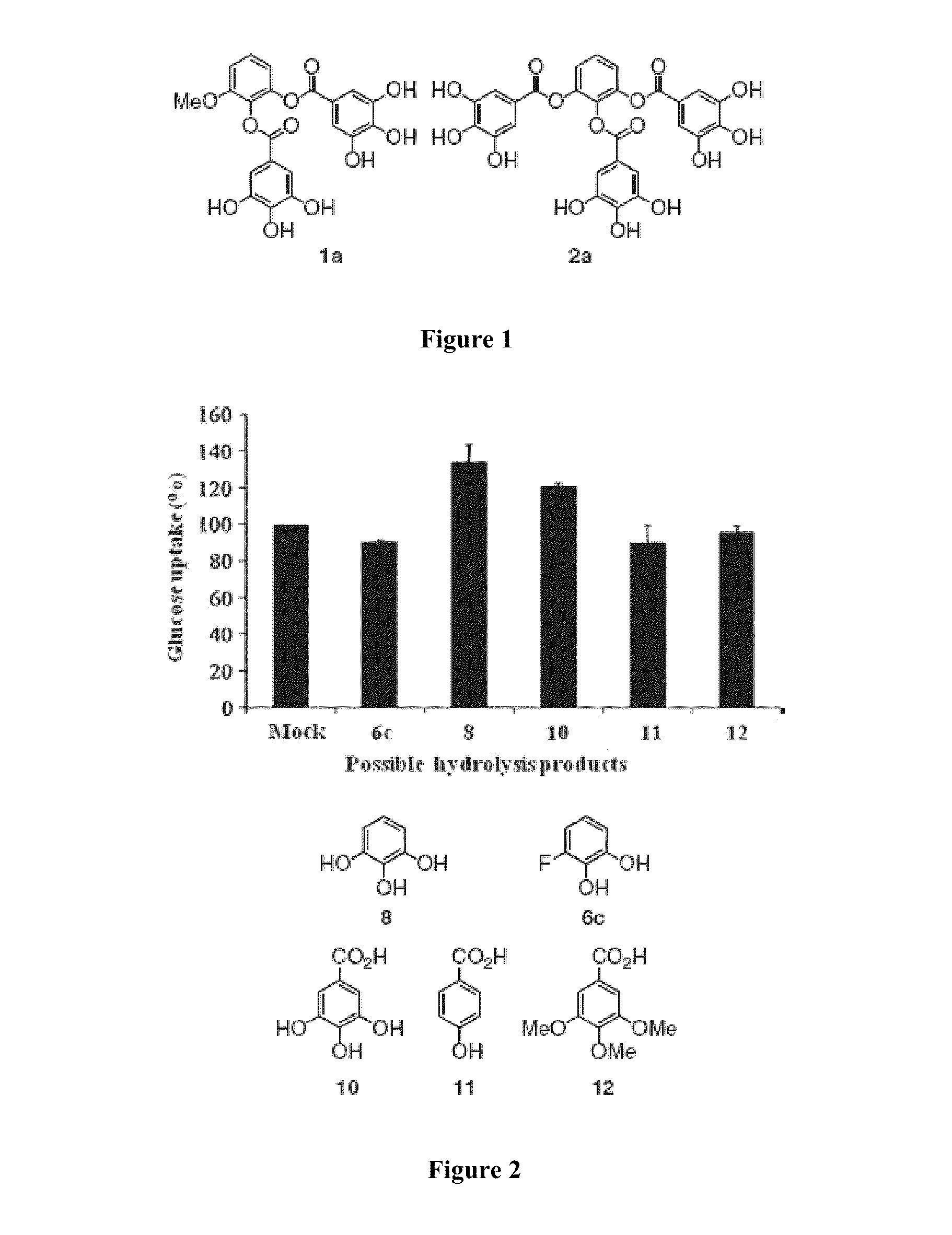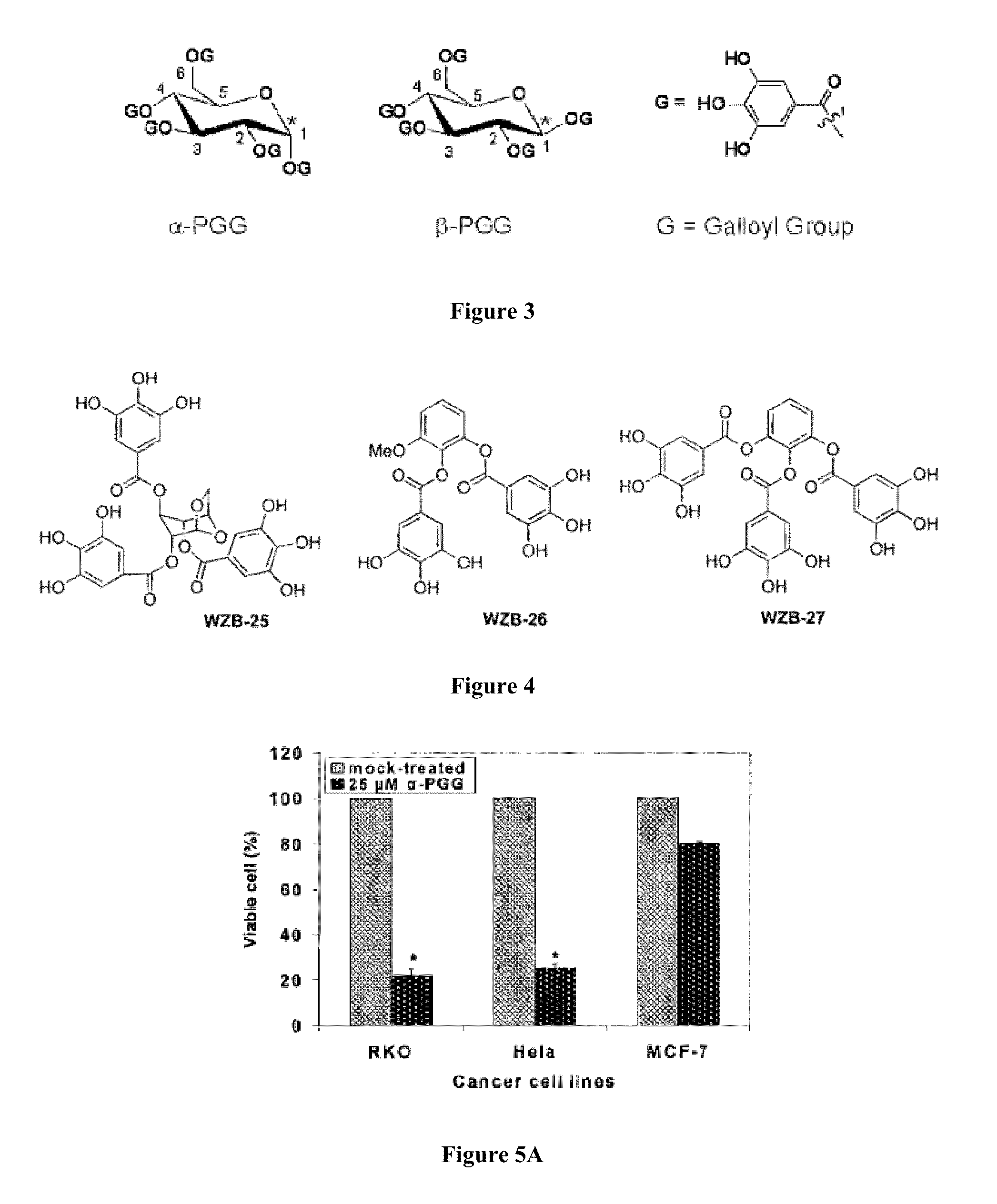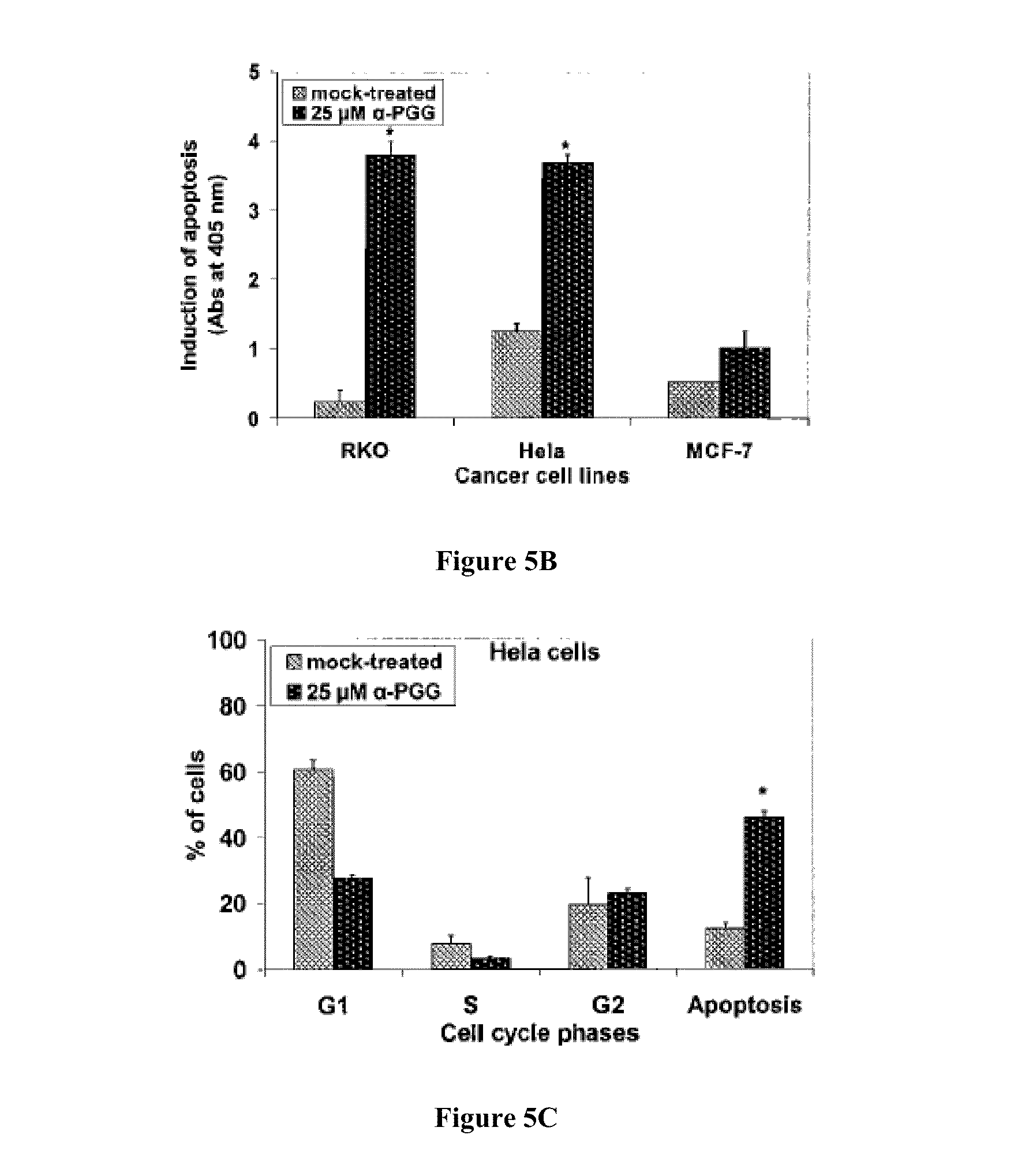Compositions and methods for glucose transport inhibition
a technology of glucose transport and compositions, applied in the field of compositions and methods for glucose transport inhibition, can solve the problems of increasing glucose uptake, increasing dependence on glucose, increasing tumor aggressiveness, etc., and correlated poor prognosis and increasing tumor aggressiveness
- Summary
- Abstract
- Description
- Claims
- Application Information
AI Technical Summary
Benefits of technology
Problems solved by technology
Method used
Image
Examples
examples
General Experimental Protocols
[0215]Experimental Protocols. Chemical and Synthetic.
[0216]General Scheme for Identifying Improved Basal Glucose Transport Inhibitors
[0217]Identification of improved small molecule anticancer agents that act as inhibitors of basal glucose transport is outlined in FIG. 24. Upon design and synthesis of potential basal glucose uptake inhibitors, the compounds will be examined in both a basal glucose inhibition assay and an apoptosis assay at a single concentration. Compounds that exceed a baseline value will be further examined and IC50 values determined. The results of these assays will be used to guide the design of additional agents.
[0218]Pharmacological Evaluation of Inhibitors of Basal Glucose Transport
[0219]All compounds will be evaluated in a series of pharmacological assays designed to ascertain the ability of the compounds to both inhibit basal glucose uptake and kill cancer cells. Initial evaluation of compounds will focus upon elimination of com...
PUM
| Property | Measurement | Unit |
|---|---|---|
| Mass | aaaaa | aaaaa |
| Molar density | aaaaa | aaaaa |
| Fraction | aaaaa | aaaaa |
Abstract
Description
Claims
Application Information
 Login to View More
Login to View More - R&D
- Intellectual Property
- Life Sciences
- Materials
- Tech Scout
- Unparalleled Data Quality
- Higher Quality Content
- 60% Fewer Hallucinations
Browse by: Latest US Patents, China's latest patents, Technical Efficacy Thesaurus, Application Domain, Technology Topic, Popular Technical Reports.
© 2025 PatSnap. All rights reserved.Legal|Privacy policy|Modern Slavery Act Transparency Statement|Sitemap|About US| Contact US: help@patsnap.com



